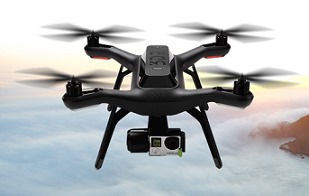다음은 Wii-ESC에 대한 FAQ입니다.
http://code.google.com/p/wii-esc/wiki/WiiESCv20FAQ
Introduction
This page is collection of answers from different forums and threads. Main intention is to collect knowelege base here and than transform it to proper documentation later on.
이 페이지는 다른 포럼이나 글들에서 대답을 정리한 것입니다. 주된 목적은 여기에 기본 지식을 정리하고 나중에 적절한 문서 형태로 전환할 것입니다.
Q: What is the difference (meaning of) RCP_MAX and RCP_FULL?
RCP_MAX와 RCP_FULL의 [의미상] 차이는 무엇인지요?
RCP_MIN/RCP_MAX - valid range, everything outside is rejected ( 유효한 범위, 이외의 모든 것은 무시됩니다)
RCP_START - where to start (with min. power) (최소 파워인 시작 지점)
RCP_FULL - where to have full power (최대 파워를 갖는 지점)
RCP_DEADBAND - deadband for startup (초기의 데드밴드)
Q: Do you have a link to compile/flashing instructions for v2
v2에 대한 컴파일 및 프로그래밍 설명서에 대한 링크가 있는지요?
The easiest way to build (빌드하기에 가장 쉬운 방법) :
Download Code::Blocks (in downloads) (CodeBlocks을 다운로드합니다)
Open project wii-esc-ng.cbp (wii-esc-ng.cbp를 'Open project'로 열기합니다)
Setup path to avr-gcc in Code::Blocks (CodeBlocks에 avr-gcc 경로를 설정합니다)
Q: I did notice on an MT3506 and a Turnigy/Keda 2213 1050KV motor that the throttle seems to have some bumps, with either normal or complementary PWM.
MT3506과 Turnigy/Keda 2213 1050KV 모터에서 정상 모드 혹은 complementary PWM 모드에서 스로틀에 'bump' 현상을 있는 것으로 압니다.
I would guess you have BEMF filter caps still in place. It does not like them any more
여러분의 ESC에 BEMF 신호의 필터링을 위한 cap이 부착되어 있는 것으로 압니다. 그 cap을 제거해야 합니다.
Q: What is Sigma-Delta modulation and how such resolution is archived with /8 timer pre-scaler?
무엇이 Sigma-Delta 변조이며 어떻게 그러한 분해능이 8 timer pre-scaler 없이 구현될 수 있는지요?
Generally concept is simple: http://en.wikipedia.org/wiki/Pulse-density_modulation. So, there are 1 bit first order SDM. Due the fact that it has integrator, it is not necessary to sample it precisely. It even benefitial to add some noise to the sampling. So SDM generation scheduled as Idle task using prothothreads, without any timer or interrupt. This also allows to naturally sync SDM generation and Analogue comparator sampling. Qantizer value can be any as soon as the integrator not overflowing. So currently all measured range passed directly to the SDM without any transformation, which is ~4000 points with extended range, 1600 with standard one.
일반적인 개념은 간단합니다: http://en.wikipedia.org/wiki/Pulse-density_modulation. 1-bit 1st order SDM입니다. 이것은 적분기를 가지고 있기 때문에 그것을 정밀하게 샘플링할 필요가 없습니다. 이것은 결국 샘플링 노이즈를 추가하는 격입니다. 그래서 prothothreads를 사용하여 Idle task로 어떤 타이머나 인터럽트 없이 SDM 생성이 스케줄링합니다. 이것은 또한 동기화된 SDM 생성과 아날로그 비교기 샘플링을 허용합니다. 양자화 값은 overflow가 되지 않은 어떤 값이 될 수 있습니다. 그러므로 현재 모든 측정된 범위는 어떤 변환없이 SDM으로 곧바로 전달되고 표준의 1600이 아닌 약 4000 포인트의 확장된 범위를 갖습니다.
Benefits of this approach :
-
Lower switching losses as FET's have enough time to properly open/close (currently min on/off ~4us) (FET가 적절히 열리고 닫히기 위한 충분한 시간(현재 최소 ~4us의 on/off 시간)을 가질 때 낮은 스위칭 손실을 갖습니다)
-
More linear power curve by the same reason. (동일한 이유로 좀 더 선형적인 파워 커브를 갖습니다)
-
Lower noise in working range. Yes, the base frequency drops to 1khz at 99.99% but it is not really critical as commutation noises are much higher there. (동작영역에서 잡음 수준이 낮습니다. 기본 주파수는 99.99%에서 1khz인데 commutation 잡음이 휠씬 높기 때문에 실제로 중요하지는 않습니다)
Q: What is done to increase dynamic response of the system?
무엇이 시스템의 동적 응답 특성을 증가시켰나요?
Yes I have 7.5° blanking time and 2 taps FIR instead of IIR for timing. 2 taps FIR still needed because ZC detection in LH and HL transitions is not symmetrical. (7.5° blanking time과 IIR 대신에 2-tap FIR 필터를 가지며 2-tap FIR 필터는 LH 그리고 HL 천이에서 ZC 감지가 대칭적이지 않기 때문에 여전히 필요합니다)
Q: How Can I activate complimentary PWM during compilation?
어떻게 컴파일 동안에 complimentary PWM을 적용할 수 있는지요?
Add "#define COMP_PWM" in config.h (config.h에서 "#define COMP_PWM"을 추가합니다)
Q: hi ziss.. im interested in wii-esc fws.. and would be interested to know what is the downside of wii-esc?
무엇이 Wii-ESC 펌웨어의 단점인지요?
Bright side (장점):
1. up to 4000 steps of resolution.
2. low noise with comparatively high efficiency (Sigma-delta modulator, instead of fixed frequency PWM)
3. linear power response. (completely no "bump" at 100%)
4. Sync recovery.
5. Safe stall detection.
6. Complimentary PWM support
Dark side (단점):
1. no EPA, throttle endpoints are fixed.
2. no reverse
3. probably lower max RPM.
4. require removing BEMF capacitors.
Q: What is better for BS20A wii-esc Complementary or Low side PWM?
BS20A ESC에서 wii-esc 펌웨어의 Complementary PWM과 Low side PWM 중에 어떤 것이 좋은지요?
Short answer: Complimentary PWM allows faster rotor deceleration, putting energy back to the battery. (Complimentary PWM은 에너지를 밧데리 다시 보내 빠른 로터 감속이 가능합니다)
Long answer: This has an interesting effect of having the motor speed more closely and more quickly track the duty cycle even without any active braking or closed-loop controlling. (이것은 모터 속도가 어떤 브레이크나 폐회로 제어가 없을 때 조차도 duty 사이클을 좀 더 근접하고 빠르게 따라가는 흥미있는 효과를 갖습니다)
'Radio Control > ESC' 카테고리의 다른 글
| RapidESC FAQ's (0) | 2014.06.11 |
|---|---|
| RapidESC Flashing (0) | 2014.06.03 |
| RapidESC란? (0) | 2014.05.26 |
| Wii-ESC 프로젝트의 소개입니다 (0) | 2014.04.04 |
| Wii-ESC란? (0) | 2014.03.13 |









